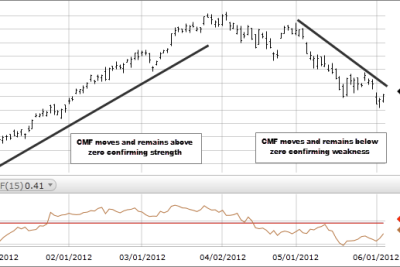
Map and Population of West Virginia: A Historical Overview

West Virginia, a state known for its breathtaking landscapes and rich historical context, holds a special place in the heart of the Appalachian region of the United States. Among its many cities, Point Pleasant stands out due to its significant role in both the early American history and its continuous evolution as a community. This article will provide a detailed overview of the map and population of West Virginia, including a historical overview that encompasses key geographic features, population trends, significant events, and the essential elements that shape the identity of this unique state.
In exploring the population of West Virginia, we will dive into the historical influences that have impacted its demographics, highlighting the Battle of Point Pleasant as a pivotal moment in its past. The interplay of various factors, including geographical attributes and economic developments, has led to the shaping of a vibrant culture within the state. My hope for tomorrow Point Pleasant West Virginia remains intertwined with the understanding of its rich history, which forms the foundation for current and future population trends.
- Historical Context of West Virginia
- Key Geographic Features
- The Evolution of Population Trends
- Significant Historical Events
- Economic Development Over the Years
- Demographics and Population Statistics
- Cultural Landmarks and Historical Sites
- The Role of Education in Population Changes
- Conclusion and Future Perspectives
Historical Context of West Virginia
The area that is now West Virginia was originally inhabited by Indigenous tribes such as the Shawnee and Cherokee. European settlers arrived in the region in the early 18th century, leading to conflicts and competition over land. The Battle of Point Pleasant is a notable event that signifies the heightened tensions during this period, as it not only showcased the struggle between settlers and Native Americans but also set the stage for broader conflicts that would shape the nation.
The Significance of the Battle of Point Pleasant
Fought on October 10, 1774, the Battle of Point Pleasant is often referred to as the "First Battle of the American Revolution." General Andrew Lewis led a group of Virginia frontiersmen to victory against a coalition of Native American tribes. This victory not only boosted the morale and determination of the settlers but also laid the groundwork for further westward expansion. In 1908, the U.S. Senate formally recognized the importance of this battle, solidifying its place in American history.
Key Geographic Features
West Virginia is characterized by its mountainous terrain, which forms part of the Appalachian Mountain range. The state is rich in natural resources, including coal, timber, and oil, which have significantly contributed to its economic development over the years. The Ohio River, one of the largest rivers in the United States, winds through West Virginia and is a key feature of Point Pleasant, making it a strategic location for trade and transportation.
Rivers and Natural Resources
- Ohio River: A vital waterway that facilitated commerce and movement.
- Kanawha River: An important tributary to the Ohio that is integral to the state’s economy.
- Natural Resources: West Virginia's coal deposits and forested lands have been sources of economic sustenance.
The Evolution of Population Trends
West Virginia's population has undergone significant changes throughout its history, influenced by various socio-economic factors, migration patterns, and industrial activities. Initially, the region experienced population growth as European settlers established communities. However, as industries evolved and extracted resources, population trends fluctuated dramatically.
Population Growth and Decline
The discovery of coal in the 19th century drew many workers to West Virginia, leading to a population surge. Towns like Point Pleasant transformed as they developed industries and infrastructure. However, the decline of coal mining in recent decades has resulted in population loss, with many residents seeking opportunities elsewhere.
Significant Historical Events
A range of historical events has shaped West Virginia and its population demographic. From early colonial days, through the tumultuous times of the Civil War, and into the industrial boom, each phase contributed to its evolution. The state’s designation as a separate entity during the Civil War reflects the complex identity it possesses, rooted in a commitment to remaining within the Union.
The Civil War Era and Its Implications
During the Civil War, West Virginia separated from Virginia due to differing stances on secession. This decision marked a pivotal moment in its history, allowing the state to join the Union in 1863. This separation led to diversification among the populations, as various groups settled in the region, adding layers to the cultural fabric of West Virginia.
Economic Development Over the Years
The economy of West Virginia has primarily relied on its natural resource sectors, including coal, oil, and gas. However, diversification has become essential as the demand for coal has waned. Today, industries such as manufacturing, chemicals, and biotechnology are becoming increasingly important in shaping the economy and influencing population trends.
Modern Economic Landscape
- Manufacturing: Contributing to local economies and providing employment opportunities.
- Tourism: Harnessing natural beauty and historical landmarks to attract visitors.
- Education: Institutions such as Marshall University are vital for workforce development.
Demographics and Population Statistics
As of the 2020 census, the population of West Virginia was approximately 1.79 million, reflecting a decline from previous years. In contrast, Point Pleasant recorded a population of 4,078. The demographic makeup of the state consists of a predominantly White population, with growing Hispanic and African American communities that have increasingly contributed to the cultural and social life of West Virginia.
Current Demographic Trends
The population decline in West Virginia raises important questions about the future of the state. As younger generations migrate to urban areas in search of better job opportunities, the challenge remains to attract new residents and retain the existing population. Efforts to improve quality of life and economic prospects in towns such as Point Pleasant are imperative for reversing this trend.
Cultural Landmarks and Historical Sites
West Virginia is rich in cultural landmarks and historical sites that narrate the story of its past. Sites such as the Battle Monument State Park in Point Pleasant serve as a reminder of the state's pivotal role in American history. The granite obelisk commemorates the battle and is a significant point of interest for visitors and historians alike.
Notable Sites in Point Pleasant
- Battle Monument State Park: Commemorating the Battle of Point Pleasant.
- The Mansion House: A historical residence with ties to significant figures.
- Grave Sites: Recognizing important individuals from the region's history.
The Role of Education in Population Changes
Education plays a critical role in influencing population dynamics in West Virginia. Institutions such as Marshall University in Huntington serve not only as educational hubs but also attract individuals and families seeking a vibrant community. Educational attainment is linked to job prospects, ultimately influencing migration patterns.
Impact of Higher Education
Access to quality education can significantly affect the growth of communities. Point Pleasant’s proximity to educational institutions encourages residents to embrace lifelong learning and pursue new opportunities, aligning with my hope for tomorrow Point Pleasant West Virginia. This connection reinforces stability and growth, contributing to revitalized demographic trends.
Conclusion and Future Perspectives
The map and population of West Virginia highlight a rich tapestry of historical events, geographic features, and economic developments. Understanding the period of the Battle of Point Pleasant to present day reveals the complexity and resilience of its communities. As we look ahead, addressing the challenges of population decline and economic development will be critical for the future of West Virginia.
As local leaders grapple with these issues, fostering a sense of hope and solidarity, the community must embrace both its history and its potential for growth. My hope for tomorrow Point Pleasant West Virginia serves as a reminder of the importance of unity and progress, where the past informs the future, and collaboration can lead to sustainable development and a thriving community.
Did you find this article helpful? Map and Population of West Virginia: A Historical Overview See more here Education.
Leave a Reply






Related posts